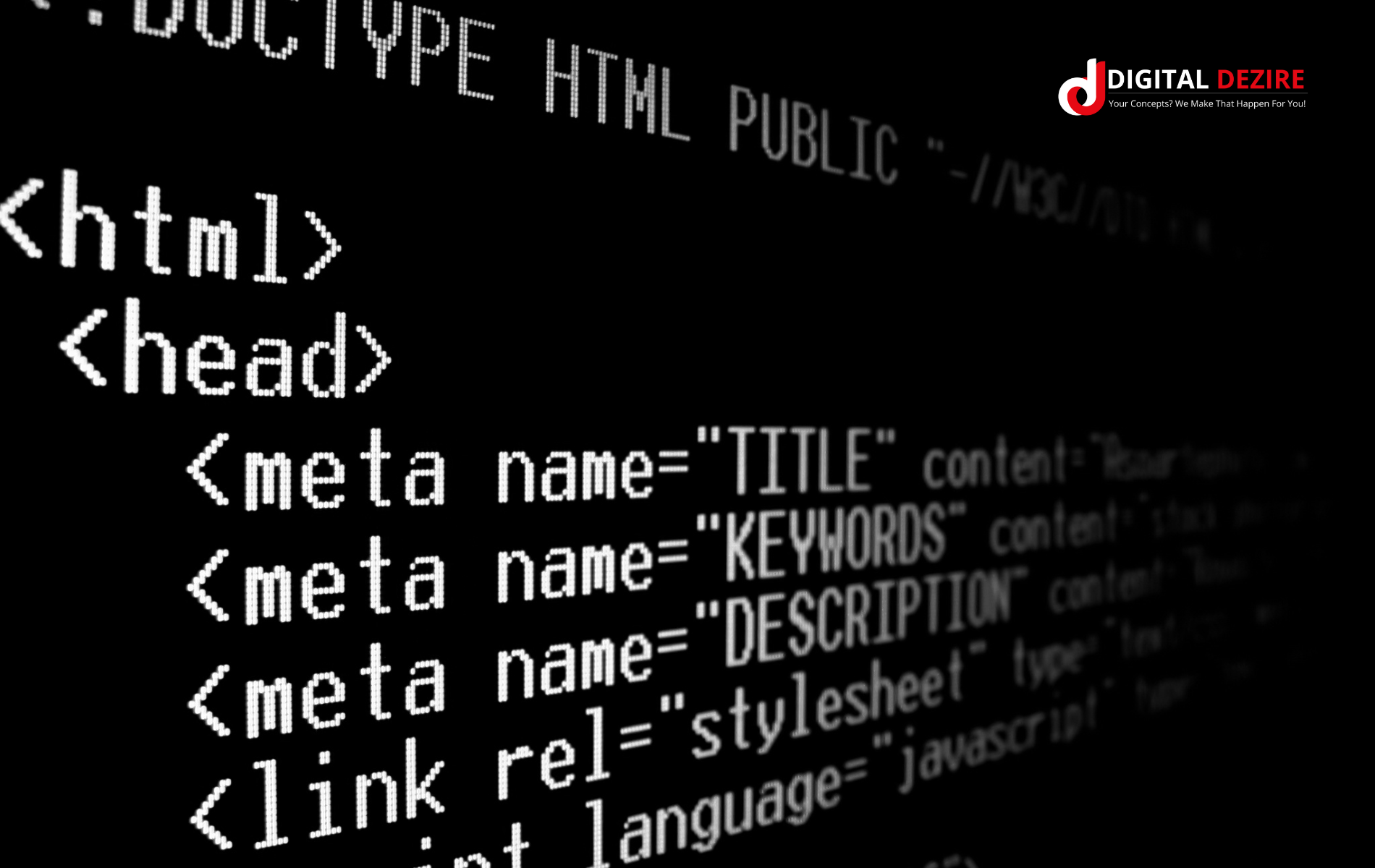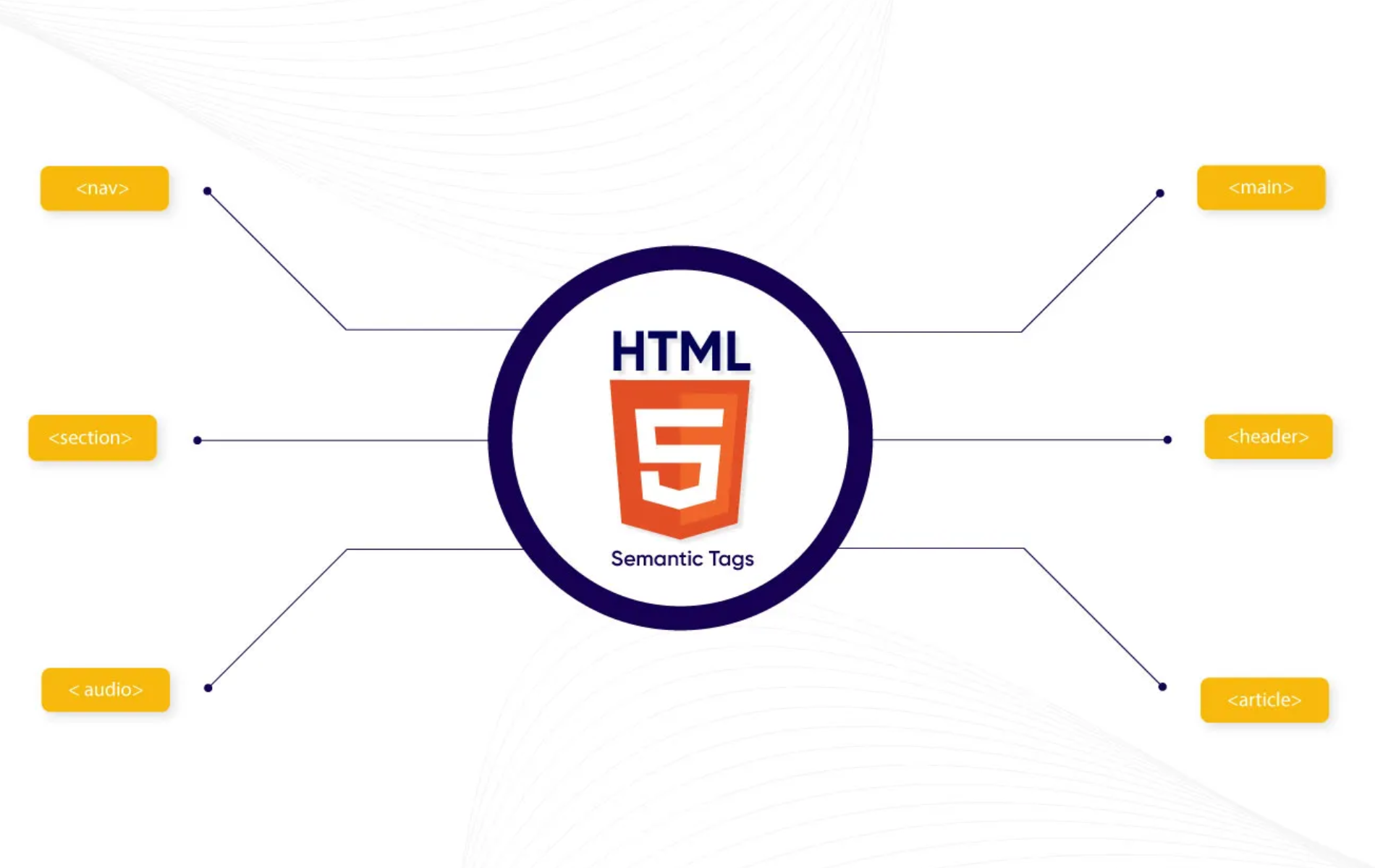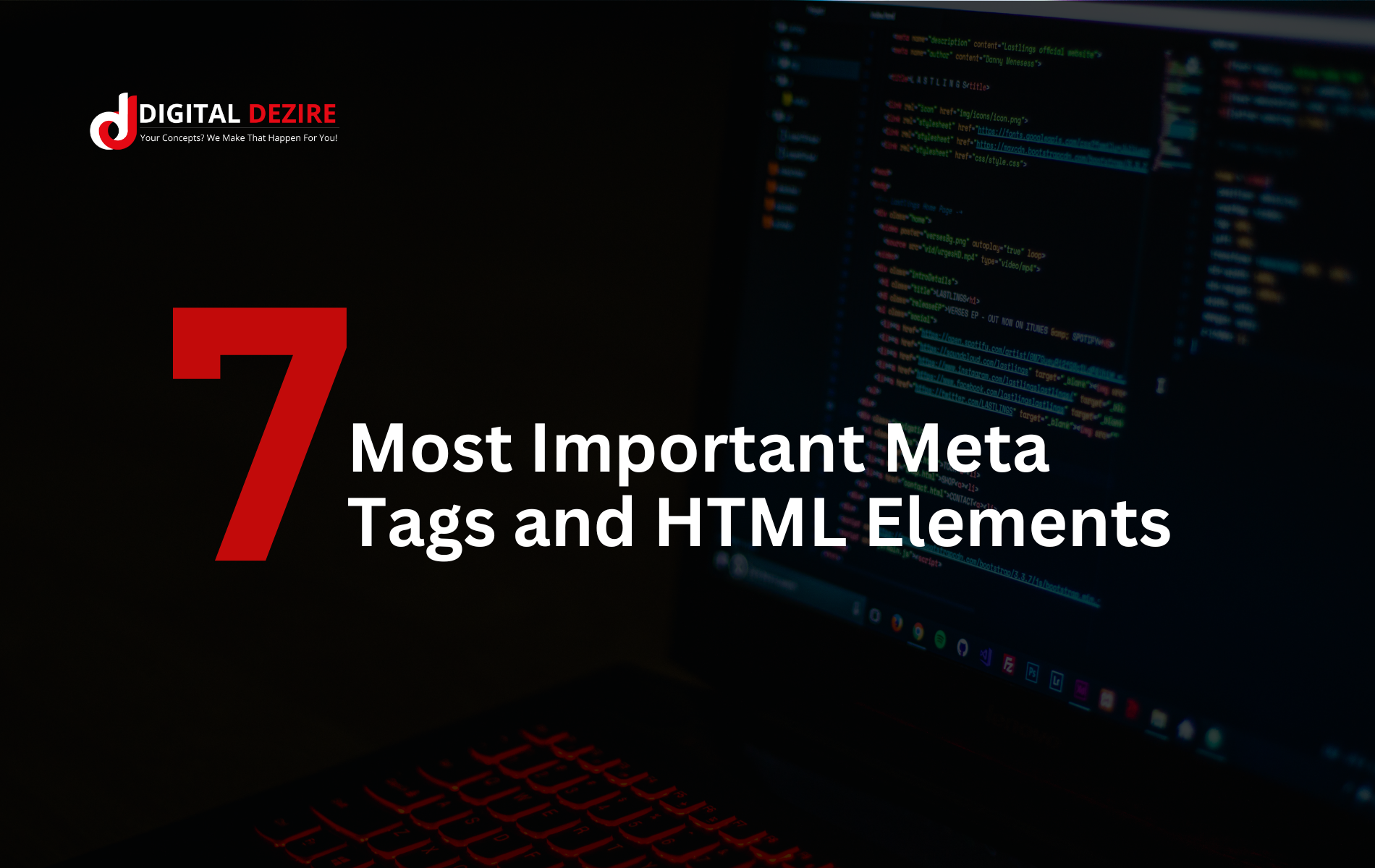+91 9821861897 | info@digitaldezire.com
Increase your website’s search visibility with meta tags and HTML elements. Learn how to optimize meta tags to make your search snippets more attractive and drive traffic to your site.
7 most critical Meta Tags and HTML factors You want To realize for SEO (identity)
Boost your website’s visibility with Meta Tags and HTML factors. Learn how to optimize meta tags to make your search snippets more enticing and power site visitors to your web page
HTML meta tags have been called one of the most critical factors of SEO for pretty a long time. And you realize what? This is still authentic.
You may (and need to) write desirable content material, appeal to backlinks, and do your great in-page layout design. However all the above is hardly ever beneficial without HTML tags.
Huh, similar to meta tags are vain if the web page itself is awful…

HTML tags inform Google about the page’s content in the most digestible manner, so it’s miles a vital component for SEO achievement.
In addition, Google can decrease your positions in case you misuse HTML meta tags – deliberately or no longer. That is one extra sign that meta tags are crucial.
So, allow’s dive in. Here are the top 7 HTML meta tags that allow you to use on your site. Examine cautiously and borrow first-class practices.
1. Name Tags
The name tag is your major and most crucial anchor.
The <title> element generally seems like a clickable headline in search engine effects pages (search engines like Google) and also suggests up on social networks and in browsers.
As an instance, in case you view the HTML for this text, you’ll see the name is:
<title>7 Most Crucial Meta Tags You Want to Realize for Search Engine Optimization </title>
Identify tags are positioned within the <head> of your website and are meant to offer a clean and complete idea of what the web page is all approximately.
The page’s name is still the first thing a searcher sees in search engines like Google, and it helps them determine if the page is possibly to answer the search intent.
A properly-written one may additionally grow the range of clicks and visitors, which has at least some effect on rankings.
Meta description also lives within the <head> of a webpage and is typically (though now not constantly) displayed in a SERP snippet in conjunction with a name and web page URL.
As an instance, this is the meta description for this newsletter:
<meta name=”description” content=” HTML tags are crucial for SEO more than ever before. In this post, I’m sharing the top 7 HTML meta tags you need to know.”/>
Although meta description isn’t always a right-away ranking factor, it requires your optimization attempt to attract customers (and Google’s) interest.
(a)The meta description is what people see inside the seek snippet collectively with the identity, so it is one of the elements that makes them decide in case your web page is well worth clicking.
(b) the description influences the variety of clicks you get and might additionally enhance CTR and reduce bounce rates if the pages’ content material fulfils the promises. That’s why the description has to be as realistic as it is inviting and extraordinarily reflects the content material.
(c) in case your description contains the keywords a searcher used in their search query, they may appear on the SERP in bold. This is going a long way in helping you stand out and inform the searcher precisely what they’ll discover in your page.
There may be no way to position each keyword you want to rank for in the meta description, and there’s no real want for that – rather, write more than one cohesive sentence describing the gist of your page, with a few keywords included.
A great manner to parent out what to put in writing for your meta description, what works high-quality for your specific subject matter properly now, is to do a little opposition research.
3. Robots Meta Tag
A page-stage robots meta tag with content=“noindex” characteristic instructs the engines like Google not to index any given page.
A nofollow attribute instructs no longer to observe any hyperlinks on that web page.
Even as those tags don’t correlate with ratings without delay, in a few instances, they’ll have a little impact on how your website online looks inside the eyes of search engines like Google overall.
For example, Google tremendously dislikes skinny content.
At the same time as it won’t be intentional, your website could have pages that provide little price to customers but are necessary for sure motives.
4. Rel=”canonical” hyperlink Tag
The rel=”canonical” link tag is a manner of telling engines like Google which version of a web page you recall the primary one and would really like to be listed via search engines like Google and found by using humans.
It’s usually utilized in instances where the identical web page is available under more than one one-of-a-kind URL, or more than one one-of-a-kind pages have very comparable content material protecting the identical concern.
Internal duplicate content isn’t always treated as strictly as copied content, as there may be commonly no manipulative purpose in the back of it.
But this could cause confusion for search engines like Google: except you specify which URL you favour to rank with, engines like Google may additionally select it for you.
The selected URL receives crawled extra frequently, whilst others are left behind.
You could see that despite the fact that there’s no threat of penalty, the sort of situation continues to be now not optimum.
Another gain is that canonicalizing a web page makes it less complicated to song overall performance records associated with the content material.
According to Google, the use of rel=canonical for reproduction content helps Google consolidate all your efforts and ship-link indicators from all versions of the page to the favoured version.
That is in the usage of the canonical tag can also help you steer the SEO attempt in a single course.
Facebook to begin with added an Open Graph to assist you in manipulating how a page could look when shared on social media.
Twitter playing cards offer similar enhancements but are different to X (Twitter).
Here are the primary Open Graph tags:
Og:identify – here, you positioned the identify to that you want to be displayed while your web page is connected.
Og:url – Your page’s URL.
Og:description – Your web page’s description. Remember that Facebook will display approximately 300 characters of description.
Og:photo – right here, you can position the URL of a photograph you need shown whilst your web page prefers to.
Use the precise social media meta tags that will boost how your links look in your following.
It’s not a massive tweak and doesn’t have an effect on your ratings on the engines like Google.
However, by means of configuring how the hyperlinks to your pages look, you may greatly enhance your CTR and UX metrics.
HTML5 semantic tags belong to the ultra-modern HTML preferred and are important to help Google and different SERPs recognize a page’s content.
Here’s how HTML5 tags appear within the page supply code:
<article>
<h1>10 most crucial Meta Tags You want to recognise for seo</h1>
<p>title tags are positioned inside the ‘head’ of your website and are intended to provide a clean and comprehensive concept of what the web page is all approximately.</p>
</article>
HTML5 Tags Examples
There are a number of HTML5 tags broadly used today through SEOs. In case you take a more in-depth take look at these tags, you’ll see that their names repeat the most commonplace elements determined on any page, consisting of movies, menus, etc.
So here they are (most of them):
<article> — Defines a large and significant piece of content (a piece of writing, a discussion board put up, and so forth.) that is going as a standalone unit.
<audio> — suggests an embedded sound or audio circulate.
<details> — Describes a widget from which the consumer can gain extra facts or controls on-demand.
<dialog> — Defines a conversation container or a sub-window a person can have interaction with in case of necessity.
<embed> — Embeds a chunk of multimedia content like motion pictures, sounds, or any outside apps.
<footer> — Defines the content material of the footer of the web page, report, or phase.
<header> — Defines the content of the header segment of the web page, record, or segment.
<main> — Defines the maximum crucial and meaningful part of the web page’s content material, or of the <article> (<main> can be placed inside the <article> segment).
<nav> — Defines a web page segment with navigation hyperlinks.
<picture> — Defines a box for a couple of photo resources.
<source> — indicates opportunity assets for the embedded media elements like <audio> or <video>.
<summary> — along side the <details>, this detail provides a precis seen to the user.
<svg> — Embeds an SVG record in an HTML report.
<time> — Encodes dates and times (birthdays, activities, conferences, and many others.) in a machine-readable format.
<video> — Embeds video content in an HTML file without requiring any additional plugin to play a video.
The image alt attribute is a tag you add to a photograph with the purpose of providing a written description. In practice, it can look like this:
Alt attributes are critical in phrases of on-web page optimization for two reasons:
Alt text is displayed to site visitors if any specific image can not be loaded (or if the pictures are disabled).
Alt attributes provide context due to the fact that search engines like Google and yahoo can’t “see” images.
For e-commerce websites, pics regularly have an important impact on how a visitor interacts with a web page.





